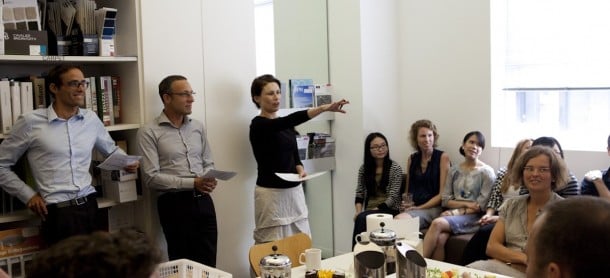Returning to work part-time after a break is a key challenge facing many women in architecture. Misty Waters, has some tips to help make it work for everyone.
1. Be proactive.
Think about your best skills and how you may be able to use them part-time. Set up a meeting to discuss your ideas for returning to work and, if there is resistance, suggest a trial period. Speak up about your ambitions and make it clear that you intend to continue working. Management may underestimate your intentions.
2. Be confident that you have a lot to offer.
Think: ‘You can either have me three or four days a week or have someone less experienced five days a week for the same money.’
3. Think about how much inside knowledge you have that may be valuable.
Can you train and mentor new staff? Do you have experience maintaining and nurturing existing client relationships?
4. Be flexible.
There will be periods when you are not running the art gallery project and may feel under-utilised. Again, be proactive, find alternative solutions or be patient and think long-term.
5. Look at the transition back to work as an opportunity to experiment for a while with other roles.
Are there any aspects of practice management that might be interesting (or less stressful) while you adjust to life as a working parent? It can be a great opportunity to get to know other staff and aspects of the industry that full-time project work doesn’t allow.
6. Do not give up on project work too easily or leave it too long.
It may be that you undertake a practice management role for a set period of time, but keep the door open to returning to project work until you are really sure you know what you want.
7. Don’t let guilt get you down.
There is always more you could be doing at work and at home. You are doing your best. A positive attitude goes a lot further than a burnt-out anxious attitude (in both places).
8. Be realistic.
You will be compared with full-time staff.
9. Think laterally about your hours.
It might be easier on your workload and your family to do four short days rather than three long days. It may cost more in childcare but it may allow a saner life and more opportunities.
10. Be prepared to check emails and receive calls on your days out of the office.
Emphasise that you will be doing this. The more responsibility you expect at work the more flexibility you need to provide in return.
11. Be canny.
I read and loved this tip in the Sydney Morning Herald (I think it was written by Adele Horin): Dress your childcare-aged children in their play clothes when you put them to bed at night – they may make it through breakfast clean!
See also Misty’s tips for employers on managing part-time staff.





















